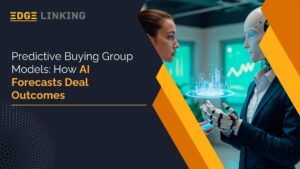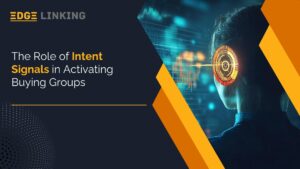A B2B company launches a product in early 2025. The market is competitive, and buyers are informed with a long sales cycle. Despite well-executed campaigns, leads are dropping off at various stages of the funnel. The marketing team is pushing campaigns, but the pipeline isn’t working. The sales team is chasing cold leads, unsure of the buying intent. What is missing? A Full-Funnel Demand Generation engine.
In 2025, buyers want value, relevance, and experience from the first touchpoint to the final decision. This shift has made Demand Generation a top-of-funnel activity. Instead of handing off MQLs to sales, a full-funnel demand engine stays engaged post-awareness, and sales teams gain insights into buyer behavior.
This article explains why you need a full-funnel demand engine in 2025.
Why It’s Important to Have a Full Funnel Demand Engine
Here’s why a full-funnel demand engine is essential.
1.B2B Buyer Journeys Are Longer
A top-of-funnel campaign might attract attention but leads to cold without mid-funnel nurturing and bottom-funnel enablement.
Example: A SaaS cybersecurity firm runs an awareness campaign targeting CISOs. Without follow-up content like case studies or demo videos, those leads lose interest before reaching the sales team.
2.It Aligns Marketing and Sales for Better Conversions
A full-funnel demand engine allows both teams to work in sync; marketing educates and qualifies, while sales close with context.
Example: A cloud infrastructure company uses lead scoring and behavioral intent data to move prospects through the funnel. Marketing nurtures leads with technical webinars, while sales contact them only when the leads have high intent scores.
3.Improves ROI and Pipeline Efficiency
When all funnel stages are optimized, fewer leads are lost in the middle. That translates into lower acquisition costs and stronger ROI.
Example: A B2B fintech firm saw a drop in cost per acquisition by shifting from single-stage campaigns to full-funnel demand generation, using targeted ads for awareness, email workflows for nurturing, and sales decks for conversion.
4.It Builds Trust and Authority
Full funnel demand generation allows companies to guide prospects through an experience that builds confidence and credibility.
Example: An HRTech platform publishes thought leadership articles (TOFU), followed by comparison guides (MOFU), and ends with customer success videos (BOFU).
5.Adapts to Data-Driven Decision Making
Intent signals, engagement scores, and content analytics power Demand Gen engines. A full-funnel model helps you respond to what prospects want and when they want it.
Example: A marketing automation company adjusts its nurture paths based on content clicks and site behavior, which improves lead quality over time.
How to Build a Full-Funnel Demand Engine That Aligns Sales and Marketing
You can align both teams by building a full-funnel demand engine.
1.Define a Shared Revenue Goal
Start by aligning both teams with the same end goal: revenue, not just leads.
Example: A data analytics company moved from measuring MQLs to pipeline contribution. Marketing focused on generating sales-qualified leads (SQLs) instead of filling the funnel.
2.Build Unified Buyer Personas and Journey Maps
Both teams should collaborate to define ideal customer profiles (ICPs), pain points, and buyer journey stages.
Example: A CRM software provider brought sales into early content planning sessions. Together, they developed messaging for each stage, from awareness blogs to objection-handling one-pagers during demos.
3.Segment Content by Funnel Stage
Create targeted content for each phase of the funnel:
TOFU (Top): eBooks, blogs, social posts
MOFU (Middle): Case studies, webinars
BOFU (Bottom): Product demos, ROI calculators
Example: A cybersecurity firm used intent data to move TOFU leads into MOFU workflows featuring peer-reviewed case studies and competitor comparisons.
4.Implement Lead Scoring and Qualification Criteria
Use a lead scoring model agreed upon by both teams to determine when a lead is sales ready.
Example: A SaaS company used engagement signals (email opens, webinar attendance) and firmographic data to score leads. Marketing only handed leads over once they met both engagement and ICP criteria.
5.Adopt Shared Dashboards
Dashboards showing funnel metrics, conversion rates, and pipeline status help both teams stay informed and accountable.
Example: A marketing automation firm created a shared dashboard in HubSpot where sales and marketing could track MQL-to-SQL conversion, pipeline stages, and closed-won deals.
6.Run Closed-Loop Reporting and Feedback
Sales should report on lead quality, while marketing refines campaigns based on feedback.
Example: A logistics tech provider hosted weekly sales-marketing meetings to review lead performance, content gaps, and campaign outcomes.
Why a Full-Funnel Demand Engine Delivers Better ROI Than Traditional Lead Gen
Here’s why full-funnel demand generation outperforms traditional lead gene.
1.Targets the Entire Buying Journey
A full-funnel demand engine delivers value at each funnel stage, resulting in higher engagement and better conversions.
Example: An HR tech company used blogs and social posts to attract leads (TOFU), then nurtured them with salary benchmarking reports (MOFU) and product demos (BOFU).
2.Reduces Lead Wastage Through Qualification and Nurturing
A full-funnel demand engine uses lead scoring, segmentation, and nurturing to qualify leads before sales outreach.
Example: A SaaS company implemented behavioral scoring in its CRM. Leads that interacted with whitepapers and pricing pages were prioritized, and sales teams only engaged with high-intent leads.
4.Maximizes Content ROI Across Funnel Stages
In a full-funnel demand engine, content is repurposed across the funnel to educate, nurture, and lead.
Example: A cloud services provider used a single research report in multiple formats: blog snippets (TOFU), webinar discussions (MOFU), and ROI calculators (BOFU). This strategy generated better engagement without increasing content production costs.
5.Data-Driven Optimization Ensures Improvement
Full-funnel engines are built on intent data, analytics, and feedback loops. They allow marketers to adjust tactics in real-time and focus budgets on high-performing areas.
Example: A B2B logistics firm noticed low engagement at the MOFU stage. They tweaked email sequences and added use case videos—resulting in a 2x improvement in MQL-to-SQL conversions.
6.Improves Marketing and Sales Alignment
When both teams align on buyer personas, messaging, and KPIs, campaigns become more focused, ensuring better ROI across the pipeline.
Example: A fintech company created shared dashboards for both sales and marketing. With real-time visibility into funnel metrics, both teams optimized campaigns, improving pipeline efficiency.
Conclusion
The brands that stand out in 2025 are building demand engines operating across the funnel and time. These engines create long-term and revenue-driven relationships. Start building your full-funnel demand engine today and turn awareness into action, interest into intent, and leads into loyal customers.






